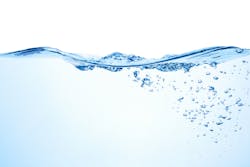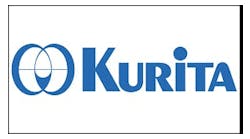Human civilization has reached the point globally where it depletes the available freshwater supply at a rate of 4.3 trillion cubic meters every year – the majority of which goes to agricultural and industrial uses.
This needs to change. That’s why Microsoft recently announced its commitment to be water positive for its direct operations by 2030. They’re tackling their water consumption in two ways: reducing water use intensity – or the water used per megawatt of energy used for our operations – and replenishing water in the water-stressed regions in which the company operates. This means that by 2030 Microsoft will replenish more water than it consumes on a global basis.
Today, according to United Nations Water, more than two billion people lack access to safe drinking water. And climate change is only intensifying this water shortage. The U.N. estimates that one in four people may live in a country affected by chronic shortages of freshwater by 2050. According to the World Bank, this climate-induced reduction in freshwater availability, coupled with increased demand, could reduce water availability in cities by more than 66% by 2050.
Microsoft will become water positive by 2030 by putting back more water in stressed basins than their global water consumption across all basins. The amount returned will be determined by how much water they use and how stressed the basin is.
Their replenishment strategy will include investments in projects such as wetland restoration and the removal of impervious surfaces like asphalt, which will help replenish water back into the basins that need it most. Microsoft will focus their replenishment efforts on roughly 40 highly stressed basins where they have operations. This reflects a science-based assessment of the world’s water basins. The majority of the world’s freshwater is divided into 16,396 basins, each of which has been assigned a “baseline water stress” score by the World Resources Institute (WRI), a leading nonprofit global research organization that focuses on natural resources. A basin is considered “highly stressed” if the amount of water withdrawn exceeds 40% of the renewable supply. Globally there are 4,717 basins that fall into this category.
This work will build on Microsoft’s ongoing investments, and advances water reduction and replenishment across their operations. This includes a sustainability design standard across Microsoft that requires water conservation at all locations globally. These include:
- Their new Silicon Valley campus, opening later this year in California, which features an on-site rainwater collection system and waste treatment plant to ensure 100% of the site’s non-potable water comes from onsite recycled sources. An integrated water management system will manage and reuse rainwater and wastewater. By recycling their water, the campus will save an estimated 4.3 million gallons of potable water each year.
- Their new Herzliya, Israel campus, which features water-efficient plumbing fixtures that drive up water conservation by 35%. In addition, 100% of water collected from air conditioners will be used to water plants on-site.
- Their Hyderabad campus in India, which will support 100% treatment and reuse of wastewater on-site for landscaping, flushing, and cooling tower makeup.
- At their headquarters redevelopment in Puget Sound, where all new office buildings will reuse harvested rainwater in flush fixtures and low-flow systems, which is projected to save more than 5.8 million gallons annually.
- Their new datacenter region in Arizona, available for use in 2021, where they are innovating ways to reduce water use intensity and replenish water in this highly stressed region. They will use zero water for cooling for more than half the year, leveraging a method called adiabatic cooling, which uses outside air instead of water for cooling when temperatures are below 85 degrees Fahrenheit. When temperatures are above 85 degrees, an evaporative cooling system is used, acting like a “swamp cooler” that you find in residential homes. This system is highly efficient, using less electricity and up to 90% less water than other water-based cooling systems, such as cooling towers. They are also partnering with First Solar to provide solar energy rather than traditional electricity generation, which is expected to save more than 350 million liters of water annually.
Microsoft’s reduction in water use intensity and their replenishment commitments address the key issue of water availability, which is the amount of water that can be used to meet demand. That, however, is only part of the challenge. Equally important is the issue of accessibility, which is the supply of safe drinking water and sanitation. That is why Microsoft is partnering with nongovernmental organizations (NGOs) to ensure more than 1.5 million people have access to clean drinking and sanitation water. They’ll focus this work in seven countries, partnering with Water.org, a leading global nonprofit focused on underserved communities, to help people in Brazil, India, Indonesia and Mexico. Microsoft will then expand this work with partners in China, Malaysia and South Africa.


